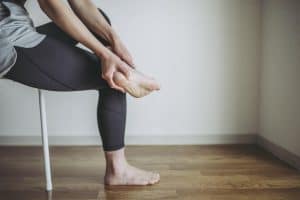
Foot Orthoses, otherwise known as orthotics, are specially designed shoe inserts that support the feet and improve posture. Our resident Podiatrist, Aleks Baruksopulo has explained the in’s and out’s of foot orthoses and how they can help manage soft-tissue injuries.
Foot Orthoses
All types of foot orthoses are attempting to change the distribution and timing of forces acting under the foot. This is to help reduce the load on affected soft tissue. To be successful, they need to reduce tissue load to a level where tissue repair can occur. In conjunction with other factors including strength, conditioning, load modification, and footwear management a rehabilitation goal can be better achieved.
The exact mechanism of how foot orthoses provide an effect under the foot is unknown. Popular models need further research and validation. Simply however, the fundamental mechanical function of foot orthoses is their influence of reaction forces at the foot-orthosis interface.
Foot orthoses do not re-align the skeleton or attempt to make your feet perfectly straight while standing or moving. However, they have been shown to alter movement, as well as the forces acting on and within different parts of the foot and lower leg during walking and running.

Custom Versus Non-Custom
The use of custom versus non-custom foot orthoses in treating foot and lower limb conditions is a hotly debated topic. This is mainly due to a lack of strong evidence that one is better than the other in helping to treat certain conditions.
One argument for little or no difference between using custom or non-custom foot orthoses is that custom foot orthoses used in some studies still need to be standardized between participants. Particularly, in terms of types of materials and features providing support.
So, Are These Truly Customised?
There are various custom design features that individual podiatrists consider when treating patients. However, this issue is further complicated by the fact there are no clearly defined evidence-based prescribing guidelines for custom foot orthoses.
If you lined up 10 podiatrists and asked them to prescribe custom foot orthoses to help the same injured individual, they could all come up with something very different.
When deciding between custom and non-custom foot orthoses to treat a patient, a Podiatrist should make a decision based on whether or not a non-custom foot orthosis has features that can elicit the desired de-loading of the affected soft-tissue injury. If they can, then the expense of custom foot orthoses can be avoided.
This is considered to be the ideal situation, especially in cases of no long-term history or recurrences of a pathology. If you are experiencing foot pain or have a soft-tissue injury, contact our podiatrist to discuss how they can help you.
Written by Podiatrist Aleks Baruksopulo
Experienced Podiatrist with a special interest in Sports and Running Injuries. A business owner with a demonstrated history of working in the health, wellness and fitness industry. Skilled in Sports Podiatry, Running Analysis, Biomechanics, and treatment of foot, ankle, and lower limb sports and running injuries. He has a Bachelor of Health Science, Podiatry from the Queensland University of Technology, and a Bachelor of Science from the University of Queensland.
Aleks is available for Podiatry appointments at our Robina & Broadbeach locations.

